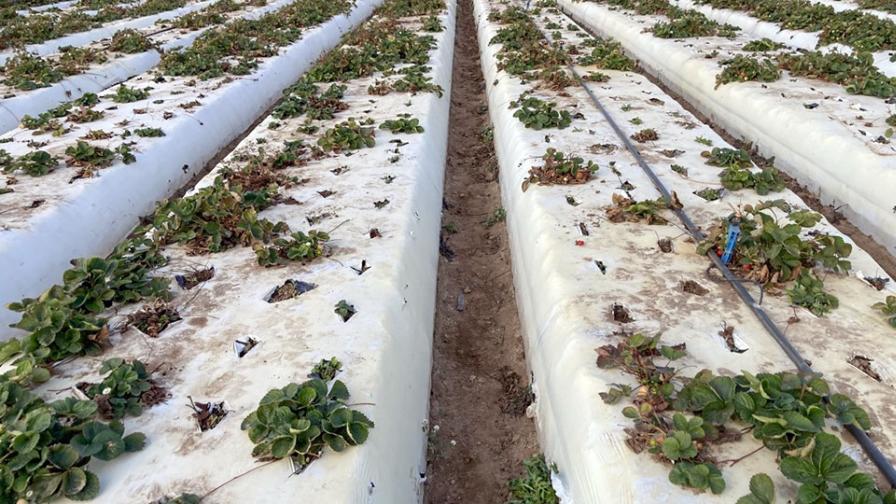Strawberry Growers Beware: There’s a New Fusarium Strain on the Loose

Researchers first discovered the Fof race 2 strain at a Fusarium wilt-infected “Ranch X” in Oxnard, CA.
Photo by Peter Henry, USDA ARS
Genetic resistance is vital to managing Fusarium wilt in the Watsonville/Salinas, CA, area. Resistant strawberry varieties, each carrying the same FW1 resistance gene, include ‘Portola’, ‘Fronteras’, ‘San Andreas’, ‘Victor’, and ‘Moxie’.
“From the last two years of surveys, we have found that Fusarium wilt is the most common disease on susceptible varieties, and it is not found on resistant varieties,” says Peter Henry, a Research Plant Pathologist with the Crop Improvement and Protection Research unit of USDA ARS. “There’s no yield loss, and there’s no disease on it with the resistant variety in a Fusarium wilt-infested field.”
The FW1 gene has been considered effective against every known strain of Fof race 1. However, Henry’s lab, in September, identified a new resistance-breaking strain of Fof at an undisclosed ranch in Oxnard, CA. The summer-planted, organic field, despite featuring the FW1-resistant ‘Portola’ variety, had suffered severe wilt disease.
Previously undiscovered in California, this Fof race 2 strain can cause disease on varieties with the FW1 gene. The strain is new to science, Henry says, and appears to have evolved by chromosome transfer between pathogenic and non-pathogenic lineage. Local origin is likely, he adds.
RELATED CONTENT: 5 New Super Strawberry Varieties — All With Resistance To Fusarium Wilt
The new strain of Fusarium was later discovered on a second ranch in Ventura, although Henry believes Fof race 2 is unlikely to be present in other districts. Of 146 fields sampled in Watsonville/Salinas in 2021-2022, only three were suspicious. Of 100 samples collected from 68 ranches in Santa Maria in 2022, only three were suspicious.
“We’re not seeing a lot of fields that seem like they have race 2,” Henry says. “It was very widespread at the Ranch X location, which means it probably originated at least one or two years ago, potentially longer.”
Henry adds that FW1 resistance will remain effective in most fields for a period of time. Fof race 1, which had been discovered in 2006, took at least a decade to become widely prevalent across California.
“Any field that doesn’t have Fof race 2 will still benefit from Fusarium wilt resistance,” Henry says. “This is a very concerning development, and we are going to monitor the spread. But for the time being, most fields will benefit from the use of a resistant variety.”










